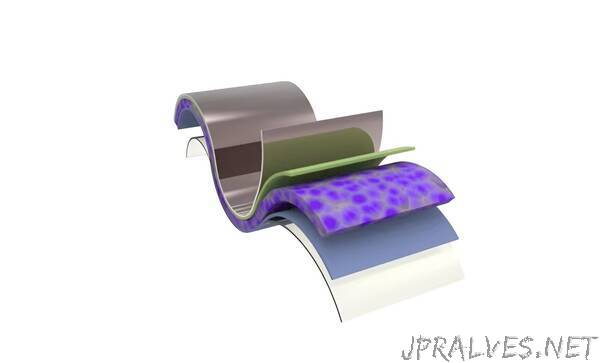
“A research group led by Prof. GE Ziyi at the Ningbo Institute of Materials Technology and Engineering (NIMTE), Chinese Academy of Sciences (CAS), has made great progress in organic solar cells (OSCs).
By virtue of simple alkyl chain modification of the nonfullerene acceptors (NFAs) (Advanced Materials, 2019, 31, 1903441) as well as ternary heterojunction strategy of introducing PC71BM into the PM6:Y6 binary system (Advanced Materials, 2019, 31, 1902210), researchers has improved the power conversion efficiency (PCE) and processability of OSCs, promising OCSs a bright future for practical application and large-scale fabrication.
Solar energy, as an inexhaustible energy bestowed by nature, has drawn great attention in recent years, due to huge demand for energy resources and increasingly serious environmental pollution. Among them, OSCs have shown great application prospects in portable, flexible cells and photovoltaic building energy supply, owing to their unique advantages of low cost, lightweight, flexibility, and mass fabrication.
Through cooperation with Prof. HOU Jianhui at the Institute of Chemistry, CAS, a novel NFA of BTP-4F-12 (Fig.1) was successfully synthesized by increasing the length of flexible alkyl side chain on benzothiadiazole unit, as well as regulating the molecular arrangement and solubility. Combining with the polymer donor of T1, the NFA BTP-4F-12 showed a high PCE of 16.4%.
In addition, the research group employed ternary strategy by introducing the third component PC71BM into the PM6:Y6 binary systems to tune the light absorption and morphologies of the blend films, achieving a record PCE of 16.67% (certified as 16.0%) on rigid OSCs (Fig. 2). In addition, a PCE of 14.06% for flexible ITO-free OSCs was obtained, which was the highest PCE reported for flexible OSCs. Most importantly, the PCE of the flexible devices still remained at over 90% of the initial PCE, after 1000 bending cycles (r = 5.0 mm), indicating the merits of high efficiency and excellent bending performance.
These studies have made breakthroughs in OSC power conversion efficiency and processability, and shed light on the large-scale commercial fabrication and application of OSCs.
These works were financially supported by the National Key R&D Program of China (No. 2017YFE0106000), National Natural Science Foundation of China (No. 51773212, No. 21574144, No. 61705240, and No. 21674123), Zhejiang Provincial Natural Science Foundation of China (No. LR16B040002), Ningbo Municipal Science and Technology Innovative Research Team (No. 2015B11002 and No. 2016B10005), CAS Key Project of Frontier Science Research (No. QYZDB-SSW-SYS030), and CAS Key Project of International Cooperation (No. 174433KYSB20160065).”
